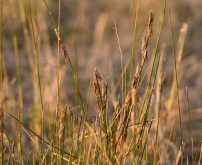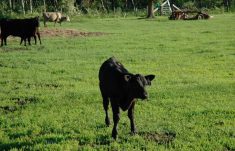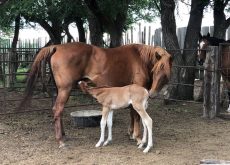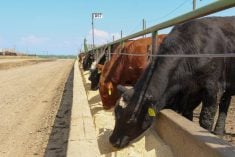Much research lately has gone into new and improved BVD vaccines to protect the pregnant cow and her developing fetus. We know it is best to protect the fetus with vaccination before breeding. That is so the cow has maximum protection throughout her pregnancy.
An unprotected cow exposed to the BVD virus during pregnancy will have three scenarios develop depending on how far along she is in gestation. In late pregnancy (greater than six months) the fetus already has a competent immune system and can mount its own defence. It is born entirely protected. In middle gestation (four to six months) infected calves may be born with congenital abnormalities involving the brain or eyes. The eyes may be very small and abnormal. The brain abnormalities involve the cerebellum, which results in co-ordination and balance-type problems.
Read Also
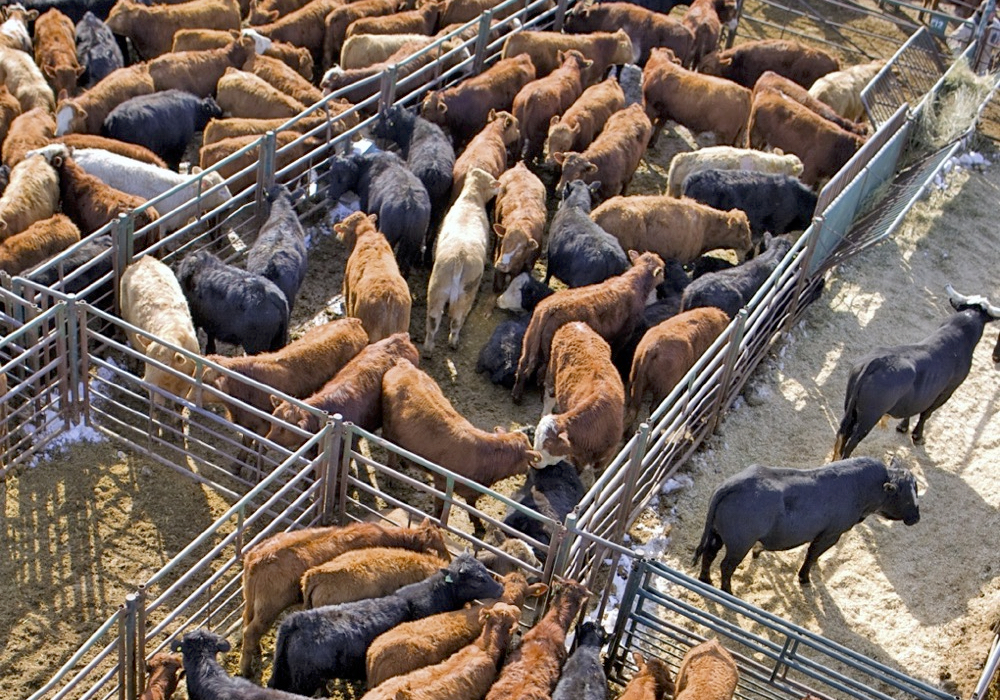
Canadian cattle herd moves into expansion phase
Beef heifer retention has started in Canada, according to Statistics Canada, and is expected to grow into 2026.
An unprotected cow early in gestation (under four months bred), infected by the disease, may abort or mummify the fetus. The greatest risk is if the fetus develops a persistent viral infection and sheds the virus when it is born. These are the calves that if exposed to BVD again later in life may develop the fatal mucosal diarrhea disease. If they survive to adult life they can also give birth to persistently infected calves. In all livestock operations, whether cow-calf, backgrounder or feedlot, we must all work together to eliminate these persistently infected or PI calves from our herds.
One would think these PI calves would be poor doing and easily recognizable, but that is not always the case. Many are normal looking yet are shedding vast amounts of BVD virus to the rest of the herd. Fortunately now there is a very accurate skin test to determine PI animals. The common method is by testing a tissue sample collected with an ear notch or punch of skin from the ear. This is convenient and can be done on live animals. The PI calves can be detected and eliminated.
The best way to control any disease (BVD is no exception) is through prevention by vaccination. Research at BVD prevention was previously aimed at protecting calves from developing the mucosal disease, diarrhea or respiratory diseases associated with BVD. We always recommended giving live vaccines to breeding-age heifers or cows before the breeding season. This provided the best immunity during the all-important first and second trimesters of pregnancy. However, there was also the worry of the live vaccines potentially causing problems, such as abortions with the developing fetus, when the vaccine was given during pregnancy.
It is critical to protect the cow because we never know when or at what stage of pregnancy BVD may come through the herd. Perhaps you already have PI cattle shedding virus in your herd constantly exposing your cows to the virus. By vaccinating cows, cow-calf producers are the first vital step in the process to significantly reduce the incidence of BVD in the feedlot population. Most BVD vaccine comes combined with IBR so you can simultaneously vaccinate for the two greatest infectious causes of abortions and fetal death in Canada.
Most recently newer research has been aimed at fully examining whether vaccines fully protect the developing fetus. The only way to know is to challenge the control (untreated) group of cattle with enough virus so a high percentage (approaching 100 per cent) either aborted or delivered PI calves. If the vaccinated group did not develop any abortions or PI calves then its protection level could be measured. That is why you see vaccines, which on the label state protection against fetal infection. The other manufacturers of vaccines will very likely run further trials of their own to prove they also have fetal protection with BVD vaccines.
Veterinarians have been recommending vaccination of BVD and IBR for many years to prevent abortions and reproductive losses. The most important thing, to achieve maximal immunity, is to vaccinate during those critical first five to six months of pregnancy. This will ensure cows have maximum immunity and the unborn calf is most likely not be born a PI animal. If you or your veterinarian are suspicious of any cows or breeding bulls being persistently infected they can easily be tested using the ear notch. If persistently infected they should be eliminated from the herd. If you can insure your cow herd has good previous immunity, vaccination with live vaccines can be done even late in pregnancy when you give your scour vaccination shots. This eliminates the inconvenience of vaccinating the cows just before breeding when they have young calves at foot. Talk to your veterinarian first if you prefer to go this route.
Pre-immunization programs, which include a record of vaccination status, are very beneficial to feedlots purchasing your calves. The cow-calf producer is the first vital link in ensuring healthy calves arrive at the feedlot. If PI calves arrive at the lot there is nothing the feedlot owner can do in the form of vaccination or treatment to rectify the situation. Hopefully producers, who use diligent vaccination programs, are rewarded with better prices. Everyone in the industry including the consumer benefits from proper vaccination procedures helping protect against the disease.
RoyLewisisapractisinglarge-animal veterinarianattheWestlockVeterinaryCenter, northofEdmonton,AB.Hismaininterestsare bovinereproductionandherdhealth




